September 20th, 2010 · No Comments
Throughout this last month I have been to so many museums I have lost track of the number. However, within this plethora of museums there have been two that impressed me so much that I remember all the exhibits I saw within them.
The first museum that put me into a state of awe was none other than the Cabinet War Rooms. I first should mention that I am a war history buff. I love to learn everything that led to conflict, during the conflicts, and the general aftermath. Therefore, hearing that there was a museum specifically dedicated to the Cabinet that endured one of world histories most massive conflicts; it had my name written all over it. Once in there I expected to see the duplications of the map rooms, the bed rooms, kitchens, etc. What I wasn’t expecting, however, was a whole floor section dedicated to the life and death of Winston Churchill. In the history courses I have taken in the past we have always blown past Churchill’s contribution to the war as the British Prime Minister.  (http://cwr.iwm.org.uk/) It was surprising to see his trajectory from child to leader of a country in a time of chaos, and how he came out on top. By far Winston Churchill has some of the best quotes in history. Some of which are:
(http://cwr.iwm.org.uk/) It was surprising to see his trajectory from child to leader of a country in a time of chaos, and how he came out on top. By far Winston Churchill has some of the best quotes in history. Some of which are:
“I always believed in staying in the pub until closing time”
“I am prepared to meet my Maker. Whether my Maker is prepared for the great ordeal to meet me is another matter.”
And my favorite….
“I have no more ambition… but to ease world tension, and pave the way for peace and freedom.”
Although all of this was completely amazing and I have never seen anything like this before it had Britain’s imperialism written all over it. They just needed to add at the end, “For the Glory of the Empire.” I think it is healthy for a government to show and flaunt its successes especially if it’s as great as surviving WWII.

The second museum that was just as amazing was the Victoria & Albert museum. Based upon its name I knew nothing of what to expect. Upon entering this enormous structure they call one museum I was taken aback by the amount of valuable items of history in one structure. Just to give you a little sense of what I saw I will write a small list of items. I saw sculptures and door fronts from the Medici family, paintings from the Renaissance era, gorgeous structures from the ancient Greek era, rugs from the Persian Empire, the Grace Kelly: Style icon exhibit, and lastly but certainly not least doodle notebooks from Leonardo Da Vinci himself. There was so much more that I didn’t explore because my legs were tired. The Victoria & Albert could best be described as a building of world treasures.
No doubt, England did not get these invaluable items through benevolent methods but rather through force. The fact that it is in one building open to public viewing free of charge almost negates the method it was gathered in. Again, this museum showed the British Monarchy’s greatness because it was able to conquer the greatness of all previous world Empires and display them in London.
The museums of London pay tribute to the greatness of the British Empire, what once was, and what the government hopes for it to be again.

Tags: 2010 Jamie
September 18th, 2010 · No Comments
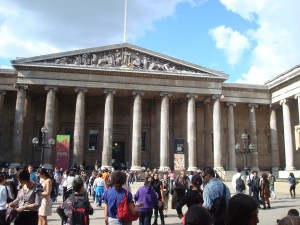
The museums of London seem to all fall around one dominant theme: imperialism. Seeing that this defined the British Empire for a majority of the last three centuries, it is no wonder that one can see its influence in each place one visits in London. Every museum either boasts the riches and plunders of the imperial era or makes some sort of comment on imperialism by what the curators chose and didn’t choose to include. As imperialism is, in my mind, the central idea around which all these museums exist, I’m going to take a look at each of the museums I have visited as reflections on the topic:
The British Museum: Many have already commented about the BM’s collection of artifacts and treasures from around the globe. It’s hard not to look at the mummies of ancient Egypt or the Elgin marbles without wondering just how exactly the BM got a hold of them. For its part, the museum seems to take delight in owning a collection that many would not consider rightfully theirs. On the “History of the World in 100 Objects,” I noted the quip the curator made about the “four languages” on the Rosetta Stone (as “Captured by the British Army” appears in English on the side of the artifact). While the BM could just ignore England’s imperial past, it seems to be content with making quips about where these objects came from. Essentially, the museum feels like a chance to show off the spoils of imperialism to rest of the world.

The Victoria and Albert Museum: This museum feels like a massive palace packed with valuables. In keeping with the British Museum, everything is thrown into areas based around vague “themes.” If you want to see jewelry, be prepared for a lot of rooms with a lot of randomly assorted riches. If you seek a certain historical artifact, you can probably find the right room based on the era and location of the piece, but after that you might have some problems as the rooms are randomly set up and gargantuan. Given the opulence of the collection, one cannot help but wonder how in the world the V&A wound up with all this stuff. The riches of imperialism are on full display at the V&A.
The Sir John Soane Museum: If the Victoria and Albert Museum feels like a massive palace packed with valuables obtained through imperialism, the Sir John Soane Museum IS a house packed with valuables obtained through imperialism. The place screams overkill, with walls of paintings that open up to more walls of paintings. I was particularly struck by the ivory chairs from India obtained during the eighteenth century: a very offsetting piece of the collection.
Natural History Museum: A few of us went through this museum after visiting the V&A, as the museum originated from the leftover collection at the V&A. While most of what one sees in the museum would not instantly recall British imperialism, some elements of the collection, like precious gems from South Africa, lead one to wonder just exactly how the museum got a hold of these pieces.
National Gallery: I really enjoyed this museum, but it is entirely Western European paintings. Given the Docklands Museum of London’s reference to the beauty of the arts in Africa before imperialism and slavery, why are none of these cultures, or those of the Middle East, represented?

National Portrait Gallery: I won’t go too much into this one, as several of my colleagues have already commented on the National Portrait Gallery’s imperialist nature. There is a stunning lack of racial or economic diversity in the collection, and I think a lot of that is a result of Britain’s imperialist past.
The Imperial War Museum: For a museum with the word “imperial” in the title, this museum actually had some of the least evidence of Britain’s imperial past of any of the places we visited. Only part of one wall was dedicated to all of the events surrounding the colonization of Africa, and I cannot recall any of the exhibits examining the struggles and fights for independence in any other former part of the British Empire. It is almost as if the curators wanted to sweep the entire history of British imperialism under the rug to focus on the glories of WWI and WWII. Based on the exhibits, one could easily come to conclusion that the Britain is embarrassed of its complete history. It was a cool museum, and I loved the section on British espionage (Who can’t love an exhibit that begins with James Bond clips?), but I found the museum incomplete because it ignored England’s imperial past.
The Cabinet War Rooms/Churchill Museum: My personal vote as the coolest museum in London, the Cabinet War Rooms show Britain near the end of the era of imperialism. Given the museum’s narrow focus, looking just at Churchill’s life and the struggle of the War Cabinet during the WWII Blitz, there was not much focus given to imperialism. One section of the Churchill Museum commented on the prime minister’s stance, early in his political career, in opposition to Indian independence. The part of the exhibit took a very apologetic tone, acknowledging Churchill’s mistake in taking such a position. Considering this museum is run in conjunction with the Imperial Museum, this part of the exhibit may provide an insight into the mind of the curators at that museum. Clearly, there is some sense of remorse on the part of the curators, evidenced by the Churchill Museum, for the British Empire’s actions, which could explain the lack of information about such events in the Imperial War Museum. Perhaps the curators are too ashamed to even broach the subject of British Imperialism.
Based on my observations, every museum I’ve seen in London is either indebted to imperialism due its bountiful collection of artifacts, or it tries to comment on the British Empire’s imperial past, typically by covering it up. Fifty years after the fall of imperialism, which is not that long ago, we still see its effects on the city of London.
Tags: 2010 Andrew
September 15th, 2010 · 1 Comment
I know the “museum subsidization misrepresents history” discussion has been beaten very nearly to death over the past few weeks. Believe me, I wouldn’t start it up again unless I thought I might be able to bring something new to the table. So here it goes.
The collection at the Victoria and Albert Museum is a sight to behold. Above the information desk there’s a staggeringly beautiful Chihuly chandelier that looks like some kind of giant hourglass made out of blue and yellow grapevines. There are hundreds upon hundreds of ornate crucifixes, rows of Classical and post-Classical sculptures, and dimly lit rooms lined with ruby brooches and diamond-encrusted scepters and ivory-inlayed lockets and 24-carat gold hair clips. It’s impossible not to be blown away (if not taken aback) by the opulence of the spread.
Yeah, there’s also a bunch of East Asian art downstairs somewhere.
But wait! You missed the coronation robe with opal and pearl sequins and the chalice with the eight-kilogram gold handle and the swords- God, those swords- with enough jewels in each to fund its own war. I know I’m not the only one who left the V & A having already forgotten about the seemingly mundane artifacts in the Korean, Japanese, or Chinese exhibition halls. There’s been a lot of speculation about whether or not curatorial decisions might have been influenced by government interests (in short, put a bunch of really colorful, sparkly British trinkets next to a bunch of boring, not-so-sparkly Asian trinkets to show off the obvious superiority of the Empire’s art) as a result of subsidization. I’ll be the first to admit that I started out very much on the side of the cultural conspiracy theorists. I think, though, that we might be approaching this from the wrong angle. There might not be foul play here after all.
It all comes down to what we, as westerners, value in art. The V & A is a huge museum. It’s almost impossible to take in every last artifact. So what are we drawn to? We’re drawn to sparkle. We’re drawn to lots of jewels and lots of gold, the more the better. Westerners value sparkle. We’ve been trained and conditioned to gauge an item’s merit in terms of carats, not craftsmanship. The fact that we’re more likely to come away from the museum with a more awestruck reverence of a weighty saphire brooch than of a painstakingly lacquered Chinese wine jug isn’t a result of some sneaky government agenda. We’re just intrinsically predisposed to like that sort of art more. It’s an almost vulgarly simple idea, but it has been a defining aspect of western popular culture for centuries. We would much rather see jewels than silk weavings, crowns than ceramics. Eastern culture values harmony, simplicity, and order in objects. Western culture values rarity and opulence. This is no trick planned by the curators. Even if the less immediately visually striking Asian art section were moved to the main level of the museum or doubled in size, it wouldn’t matter. As long as there are jewels and golden scepters for westerners to gawk at, the V & A will always be a museum, first and foremost, fueled by the splendor of those artifacts. This may or may not lead to a disproportional reverence of one region’s culture over another’s. It’s not a matter of misrepresentation of art or history on the part of the museum- it’s a matter of a fundamentally skewn collective perception of what is or isn’t worthy of appreciation.
Tags: 2010 Patrick
September 11th, 2010 · 1 Comment
Throughout our time here so far, I’ve been to museums that I’ve loved and loathed. Regardless of how I felt about the collections, each museum seemed to say something about England, as well as demonstrate amazing educational programs. (I’ve decided to tackle the issue of museums in two separate blogs. I’m not going to deal with repatriation and provenance, both issues have been on my mind a good deal at a couple of the museums, most noticeably the British Museum and the Sir John Soane museum, in a second blog. This one will be more general and focus a bit on educational programming within the galleries.)
Firstly, thinking back to over two weeks ago, the Greenwich Observatory was an interesting museum. It wasn’t one of my favourites, partly because of the collection, most of which I did not really care for. However, the excellent interactive bits throughout the exhibits were engaging. It did a good job explaining the importance of Greenwich time and it’s relationship to the development of shipping. (I probably know more about longitude now than I ever needed to know.) Unlike the other museums I’ve visited, the achievements it highlighted, were an integral part of the build-up to imperialism vs the spoils of imperialism.

Prime Meridian
The Tate Modern would be my next least favourite. I like some modern art, but it is not normally my first choice to spend an afternoon admiring. (Unless it is a Kandinsky show.) Throughout the Tate, I felt that some of the space had been wasted, especially on the floor where the membership room was located. The main galleries were nice, but offered very little in terms of supplemental didactic materials that could further engage the viewer- all of that was outside of the gallery. While the interactive bits were very interesting, they could easily distract from the art itself. (The seemingly endless reel of video shorts seemed to confirm this.) Yet, I admired the activities for the younger children which engaged them and put the art on their level. By separating the modern art from its other collections, the Tate seems to promote its standing: it is worth more than a gallery add-on in the main building.

The Tate Modern
The Guildhall Art Gallery, by comparison, offered very little interactive displays. By the time I had visited here, I was so use to in-depth descriptions, a wide audience, crowded galleries, and fun didactics, that the seemingly empty gallery caught me off guard. It was nice to see the Roman Amphitheater; the room’s set-up was incredible with recreations of the gladiators. However, the gallery’s art collection was lacking. It mostly seemed to be lesser works of second-tier artists or smaller copies of major artworks created later in an artist’s career. I believe that the gallery was trying to show the positives of British art in the last 200 years, but the gallery failed in this mission because it failed to hold one’s attention for long. Furthermore, the special exhibitions were too text panel heavy. (Balance seems to haunt this gallery.) The panels were informative, but when 3/4 of a panel is devoted to reproducing a picture which is hanging next to the panel, there is a problem. The viewer is drawn to the reproduction, not the actual artwork, defeating the point of the gallery.
The National Gallery is one of my favourites that I have visited, partly because of the Wilton Diptych and partly because there is one spot where my favourite Holbein and a Vermeer are both in one’s line of sight. The collection is outstanding and the works seem to represent the majority of art history. Well, my favourite bits at the very least. While there are not as many interactive activities, the didactics are engaging and there are educational options available. Instead of only seeming to be the spoils of imperialism, the collection has a truly British feel, partly because so many of the works are ones that directly relate to English history rather than the history of far off places. Furthermore, it’s easily accessible and not hidden like the NPG; it’s prominent position on Trafalgar Square also helps with accessibility.

The Wilton Diptych
(For more information: http://www.nationalgallery.org.uk/paintings/english-or-french-the-wilton-diptych)
The Victoria & Albert would be tied for my second favourite museum thus far with the National Gallery and the British Museum (which I’ll discuss in my other museum post). I spent almost 2.5 hours in the new Medieval and Renaissance Galleries, which were not only gorgeous, but held some incredible pieces. (Can I please just have one grotesque figure?! Just one…) Several people have noted that the sheer amount of stuff in the museum is overwhelming. Outside of the M&R Galleries, I would agree with this. Here, the museum seemed to be addressing this issue, trying to open up the galleries and spread out some of the pieces. Furthermore, the excellent listening stations found throughout the galleries were a perfect mix of in-depth and cursory information, allowing the viewer to pick and choose the information they heard based on their interests. (Highlight: listening to Gregorian chants while viewing the different altarpieces, all of which were stunning.) The V&A proudly displayed artworks which combined to tell the story of the world through art. Unlike the British Museum, it did not claim to be a solely British institution, which I think in some ways helped make the museum a more open place. Furthermore, because it is an artistic school as well, it’s collections are all educational, adding to a different responsibility for its didactics and what is should be collecting. It filled gaps through its amazing replicas gallery, which included some of the most famous works ever created.

Misericord, Victoria & Albert
When taken together, the museums not only provide one of the most stellar examples of museum education in practice, but also serve to tell the triumphs of the British Empire and to highlight the triumphs of the larger artistic international tradition. If London is a city of the world, then its museums reflect this.
Tags: 2010 Stephenie · Museums
I love museums. I like to put my ipod on and wander around alone, allowing myself to really get the full experience of the art. It feels like I’m connecting to not only the piece of art itself, but to the artist and his or her experiences and emotions.
On Saturday, Amy and I took the tube to Charing Cross to visit The National Gallery. There we proceeded to immediately get lost in the extensive building, but we weren’t complaining. We wandered through room after room that held amazing works by Rembrant, Van Gogh, Monet, Leonardo da Vinci, Cezanne, and Turner, just to name a few of my favorites. I compared this museum to the Met in NYC: both are enormous, well cared for, and very popular. However, I noticed a key difference. This difference is simply that most museums here are free, with a just a suggested donation, unlike the Met which charges 10$ per visitor. I love that England honors the historical and cultural value of artwork by making it accessible to the general public. Not only could I observe famous works of art, but I could also examine the evolution of religious practices, social castes, daily life, and even fashion free of cost.
This is a pretty good segway into discussing the museum I visited today: the Victoria and Albert Museum, commonly referred to as the V & A. As a small group, we left from Euston Station to take the central line directly to South Kensington where the tube conveniently led us straight into the museum.
At first, I really didn’t know what to expect of this experience…I mean, I know very little about fashion and I simply wasn’t sure how I was going to be able to relate to the displays.
Yet, as is often the case, I was pleasantly surprised.
I walked into a room filled with some of the most beautiful sculptures I have ever seen. Though I had never heard of most of the sculptors, I was able to get really close to each of the statues and really examine the detail and expression in each.
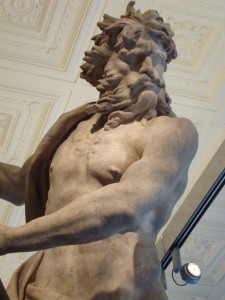
With my head phones in and the world tuned out, I strolled around. There was a huge exhibit on the evolution of clothing, another on shoes & accessories, another on fashionable metal-ware (pots, religious idols, masks, etc).
It was really cool to see how our everyday lives have been affected by the trends of the past. We often hear that things are “out of style” or “not in fashion anymore” but have we really stopped to contemplate what that means? Fashion is constantly fluctuating and changing and all of us, (whether you consider yourself fashion forward or not), are players in this game. We ourselves are walking works of art, displaying the genius of designers as they mold trend after trend, mixing past and future to create something entirely new. And that, at least to me, is fascinating. The thought that I am connected to the past through the evolution of fashion really intrigues me and I would never even have noticed this unless I’d visited the V& A museum!
Another exhibit that I thought was amazing, literally AMAZING, was located in the main lobby of the museum. It was called “Telling Tales; Fantasy and Fear in Contemporary Design” created by international designers Tord Boontje, Maarten Baas, Jurgen Bey and Studio Job who were all inspired by the classic fairy tales which they then translated into their construction offurniture. I know it sounds almost comical (like really, how can furniture be at all interesting) but I’d never seen anything like it. I posted a link a little further down that gives you a little tour.
Also in this exhibit was a frightening, but brilliant, room that entitled “Heaven and Hell”. I won’t give all of it away because I cannot adequately describe it, but the link below also can give you an idea of what to expect. However, I will say this, the lighting, color, back drops, music, and the positioning of the art are all major contributors to the overall effect of the art and are carefully constructed by the artists/museum staff. Basically, see it in person because you won’t regret it.
http://www.vam.ac.uk/microsites/telling-tales/exhibition.html
This exhibit only lasts until October 18th, and I suggest everyone see it while here. Truly, both the National Gallery and the V&A are exceptional and I really enjoyed having the opportunities to both observe and reflect on my experiences.
Tags: Maddie · Museums · Uncategorized
August 30th, 2009 · 1 Comment
Today Sarah, Chelsea and I made a journey to the Victoria and Albert Museum. Upon immediately entering the V&A, we noticed that it was going to be a hodgepodge of all sorts of items. The first room we entered featured various nudie sculptures that caught our attention. Then to our right we noticed the “Fashion” exhibit. The “Fashion” exhibit featured everything from a 1700s brocade ball gown to futuristic designs. Being in a girly mood, we decided to go to the jewelry section next, we can dream can’t we?
On the way, we stumbled upon an ironworks exhibit, gargantuan columns, and Asian textiles. One of the best exhibits, we thought, was the Theatre and Performance gallery. This exhibition housed anything from ballet costumes to miniature set designs and various recordings of performances. This kind of exhibit, we felt, was rare compared to the other museums we had visited.
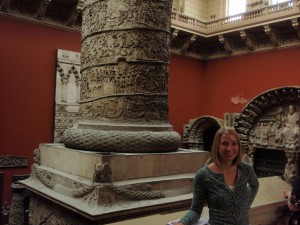
Alli morphed by a gargantuan columnNo caption needed.
As a whole, we felt that this museum showed more socio-cultural exhibits than the rigid British Museum and National Gallery. The 20th Century exhibit showed anything from an iMac to early cell phones. It included a section about technology as an astestic, featuring a pink vacuum cleaner from the 1970s. This museum tended to show more “everyday life” items rather than royal jewels and strictly upper class items that are less easy to relate to. Even the jewelry exhibit included less elaborate pieces, such as funerary rings, that did not necessarily belong to royalty or a famous name. These items weren’t just “dug up from the ground” and put on display, but they were placed in a better context.
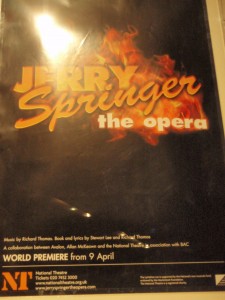
No caption needed.
Additionally, the V&A seemed to be more “British,” containing the most number of galleries dedicated to English artifacts and history. They had 13 rooms entitled “British Galleries: 1760-1900” whereas the British Museum only had 2 rooms and the National Gallery had 4. It is interesting that these two museums are considered “national” museums and yet they have the least amount of national artifacts.
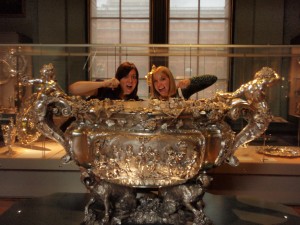
Sarah and Alli drinking from the giant punch bowl
Tags: Alli · Chelsea · Museums · Sarah
Something that’s unexpectedly been a big part of my experience so far has been the chance to look at museums from a broader perspective. Recently, I’ve been averaging about one museum a day, and while I’ve enjoyed all of them at least to some degree on a “these are interesting things to look at” level, what I’ve really had a chance to do for the first time is think about museums from a comparative perspective and critically think about narratives and curation. For example:
What purpose does the Victoria and Albert Museum serve? Does it have an overall theme? Should it have one?
For More on the V&A, read Grace/Kelley’s post from yesterday. I too got a disjointed vibe from the place, but also felt it was quite pleasant. The Museum bills itself as “the world’s greatest museum of art and design”, and while all of the museum’s contents vaguely fit in those two categories, that doesn’t really do the institution justice.
A basic exhibit on fashion led to giant Raphael cartoons, which we followed with Iranian and East Asian cultural artifacts and a room so full of medieval sculpture, I thought they might all topple over like dominoes if I were to trip over one. Upstairs we found metallurgy, miniature paintings, and a vague exhibit about modern design. At face value, the V&A looks like leftovers from the rest of London’s great museums thrown together, and yet we all learned things and generally had a good time. In this case, the V&A didn’t need an overarching theme or narrative for its contents to interest us, but I’m not sure I’d recommend it to someone who’d seen a lot of the other great London museums and was looking for something new.

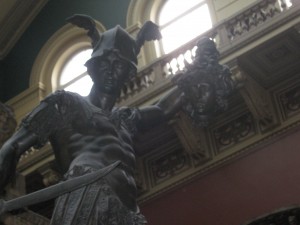
Here's a cool theme idea. The V&A: Heads Will Roll
Secondly, does the British Museum need to make itself less stuffy?
I took another shot at finishing the BM today (maybe next time). One thing I noticed the second time around was that a conscious effort is being made by the Museum to reorganize some of itself along thematic rather than geographic lines. One smaller exhibit Henry, Brandon and I all liked dealt with living with death from a broad and cross-cultural perspective. A sign we caught before we left implied more of these types of exhibits were soon to come. So, what does it mean that after depending on a geographic display of its vast collection with a few special exhibits for its entire history (which the National Gallery and the V&A to some extent do as well), the British Museum has decided to start to make changes. I don’t really know why they are now (anyone have a guess?), but I think I approve.
Finally, I thought I should add some thoughts about the Notting Hill Carnival today. Rather than picking up a two pint bottle of Strongbow and joining in on the fun I thought I’d use the opportunity to take some mental field notes on Londoners and public events in Britain. Here are a few of the many reasons the Carnival could not have taken place in the States:
– No American event would allow outside alcohol and alcohol vendors when it’s just as easy to close the place off and jack up the price
– Americans hate thinking about trash, and certainly don’t want to see it or think about how much they create. Rubbish bins are few and far between, so this is not possible at the Carnival
– I find it hard to picture one of the wealthiest parts of an American city allowing itself to be opened up to the masses for two days of drinking and very loud music. I got the sense that some locals were elsewhere or were fortified in their flats, but most had joined in at their windows or in the streets.
People who also went: if you disagree or can think of another reason, put it in the comments.
Tags: Aidan
I absolutely love being alone.
Today was the perfect Patsy day. A perfect Patsy day consists of exploring, clothes, history, being dressed up, and smiles.
I have been waiting to go to church here in London and today I got to. I figured out my tube route and then got all dolled up and went on my way. One of the things I was most excited about coming to London, was being able to not only explore my faith in another country, but to meet new people who also share that same beliefs. That being said CHURCH WAS GREAT!
The church building I attended was right smack in the center of a million museums. After the service, I walked outside and decided to go into the Victoria and Albert museum (not knowing it was required). I thought the contents of this museum were unbelievable, and it went on forever.
I spent a rather long time in viewing the fashion exhibit. I have always been obsessed with clothes, and in these rooms, I was like a kid in a candy shop. The way clothing has evolved over time, to me, is rather fascinating. Clothes represent more than just pretty colors and fancy fabrics. Clothing shadows the transformation, liberation, and movement of women. This exhibit demonstrates how beautiful clothing can be and how creative the fashion mind is.
Needless to say: Heaven.
I also enjoyed the exhibit on fairy tale furniture. I got in trouble for using my camera there but for heck sakes there was a PRINCESS CHAIR!!!! I wanted a dang picture.
After the V&A, I held myself back from entering the Natural History museum, (Im obsessed with the NYC, and DC museums), and frolicked up the street. I experienced a tad bit of anxiety when I had know idea where I was, but i quickly used my AtoZ and planed my way back. After I calmed myself, I just relaxed. I happened to stumble upon Harrods! (This was not planned I promise I had absolutely know idea where I was). I breifly walked in and noticed the amount of people, and left. I hate crowds.
Like I said before, I just love being alone. Not only do I love that i can navigate myself through out this city, but I really enjoy that fact that I can go to church, explore a museum, get lost, gawk at clothing, and find my way home without having one legitimate conversation with anyone. I was walking home from the grocery store the other day and I realized for the first time, that I am alone. Is this a good think? Right now it seems like it.
This trip is helping me grow in more ways that i realized. I feel like im learning to be a completely new person, and I’m okay with it.
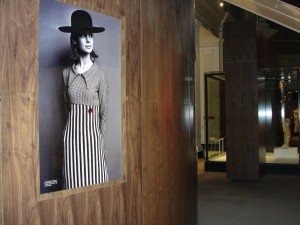
Tags: Museums · Patsy
In the past three days I have visited 3 museums, the Globe, and a carnival so needless to say I have a lot to blog about.
On Friday 28 Aug. I went to the Tate modern. Before arriving I was very excited to start through the modern art gallery, however it drastically started to go down hill from there. In the first few rooms I was happy to see works by Miro, Matisse, and Picasso. As the rooms went on the artists became more obscure and the works became more and more disturbing. If any of you out there are considering taking your young children to the Tate Modern, think again unless you want them to have nightmares for weeks afterward. The unsettling works began with photographs of men with bandaged bleeding genitals and escalated to projected images I would prefer not to describe in this blog post. Needless to say I did not make it through the entire museum before I had had enough. I do not like nor do I respect shock art of this style. I feel that it is pointless and is only shock for shock’s sake; it does not hold a message nor purpose. I think that shock art is produced by otherwise obscure artists as a method of getting attention, publicity, and money. For this reason, I decided not to support such art and artists and I left the Tate Modern
After witnessing the projected images I went to the Cabinet War Rooms.The Cabinet War Rooms were a much better experience than at the Tate Modern. With my student ID I was able to get a ticket for 10.40, which included the entrance fee into both the Cabinet War Rooms and the Churchill Museum and awarded us the opportunity to us a hand held audio listening device. At the Cabinet War Rooms Museum we were able to walk through the cabinet war rooms and see them through Plexiglas as they were during World War II while listening to historical commentary through our hand held audio devices. Walking under slabs of concrete through very small corridors and rooms really helped me imagine how it would have been like for Churchill and the others to live during the air raids. I personally cannot fathom having to stay underground for months at a time without being to leave such a small dwelling and get outside. However, the museum gave me a taste of what it would have been like.
Yesterday, 29 Aug. I went to the Victoria and Albert Museum. Everyone else wanted to go to the British Museum around the corner, but I wanted to go to a required museum that was further away while I still had time. So as everyone else headed to the British Museum I went to the Victoria and Albert by myself. At first I was a little nervous about heading out in the city on my own but as soon as I made it to the museum I immediately began to see the benefits of going by myself. I could walk at my own speed and visit all the exhibits I wanted to see. So, I decided to purposefully get lost in the museum (which was easy to do considering the museums vastness). I wandered from the sculpture room through a room filled with Islamic art, to a the Japanese exhibit, a fashion exhibit, a Raphael exhibit, a British exhibit, a iron wok and wares exhibit, and a jewelry exhibit before getting to tired to continue any further. Of all the things I have done in London so far going to the Victoria and Albert museum has been the most enjoyable experience so far. I loved the LARGE variety of exhibits the museum had and would greatly like to return. The museum has something for everyone and is a a must see stop for any trip to London; I am glad Prof. Qualls required us to go!!
Though I liked the Victoria and Albert Museum I found it rather confusing. It did not seem to have any distinct layout or purpose; it was simply a bunch of different things shoved together into one overarching museum. Most other museums I have been to have a distinct type of art and artifacts on display. The Docklands Museum was all about the history of the London docks, the National Gallery consisted of only classical art, and the Tate Modern stuck to only modern art. However, the V&A did not just have art nor did it just have artifacts and it did not stick to a particular time period or place. The museum’s art and artifacts were all over the place only separated by rooms, almost as though each room was its own distinct museum. In search for the museum’s overall goal I looked at the website and found that their mission statement was:
“The purpose of the Victoria and Albert Museum is to enable everyone to enjoy its collections and explore the cultures that created them; and to inspire those who shape contemporary design.
All our efforts are focused upon a central purpose – the increased use of our displays, collections and expertise as resources for learning, creativity and enjoyment by audiences within and beyond the United Kingdom.”- http://www.vam.ac.uk/about_va/
To me this goal, like the museum’s collection, seems a little too broad for a single museum. Most of the exhibits are organized by the objects they contain rather than the cultures they represent, and therefore the museum’s goal cannot simply be for the visitors to learn about the art of various cultures. It also cannot only be for the enjoyment of those who visit the museum. I can understand the museum’s goal to use the collections for educating the public, but still the question arises: “what are they teaching and why are they teaching it?”

The Victoria and Albert

Princess Diana's Dress at the Victoria and Albert
Tags: Rebecca
August 29th, 2009 · 1 Comment
Today we wandered, via the scenic route, over to the Victoria and Albert Museum in South Kensington. We knew that it would be an eclectic and eccentric collection, but we were in for a surprise…
Upon exiting the convient tunnel linking the Tube to several well-visited museums and sites in the area, we found ourselves in a ground floor sculpture hall. Randomly picking a direction to walk in, we wandered into in the fashion section. (Aidan and Brandon were thrilled.) In this collection we found everything from hautecouture to Elizabethan-era ensembles. Some of these clothes were truly shocking! One such item reminded Kelley of a woolly mammoth, but alas, it was a apres ski jacket. While we were lingering by a shirt made from a parachute and some heavily-sequined items, we could see into an exhibit of Raphael’s cartoons.
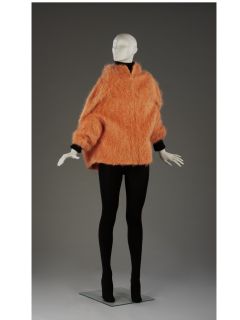
The Woolly Mammoth, erm, Apres Ski Jacket (picture taken from the website of the Victoria and Albert Museum)
A cartoon is a preliminary drawing for either a tapestry or a painting. In this case, the drawings were for a series of tapestries commissioned for Pope Leo X and they depicted a number of scenes from the Bible. We were impressed with the sheer size and careful preservation of the drawings. As one of the completed tapestries was present, it was also interesting to see what the finished product looked like.
We decided simply to wander from exhibit to exhibit in order to understand the Victoria and Albert collection as a whole. We were met with limited success. While the museum contains an extensive array of artifacts from around the globe, we found that there was no logical flow pattern in the museum. For example, we went from Korea to the European Cast Court (essentially a large number of copies of well-known facades and memorials) and again from finely-painted late 19th century tables to the radios of the 20th century. Essentially, we were confused. Why were these objects here and what is the purpose of their order? What is the collection of the Victoria and Albert trying to say to the visitor? It reminded Grace of a really nice yard sale. To Kelley, it was like searching around her grandparent’s basement. We found the artifacts to be very interesting and laid out well within their exhibits,we just question the museum’s purpose as a whole. That said, it was a worthwhile way to spend an afternoon. (We highly recommend going out into the garden and watching the children playing in the paddling pool!)
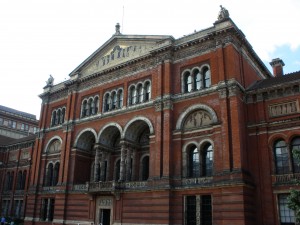
The architecture of the V&A from the garden
Tags: Grace · Kelley · Museums · Uncategorized
 (http://cwr.iwm.org.uk/) It was surprising to see his trajectory from child to leader of a country in a time of chaos, and how he came out on top. By far Winston Churchill has some of the best quotes in history. Some of which are:
(http://cwr.iwm.org.uk/) It was surprising to see his trajectory from child to leader of a country in a time of chaos, and how he came out on top. By far Winston Churchill has some of the best quotes in history. Some of which are:



















